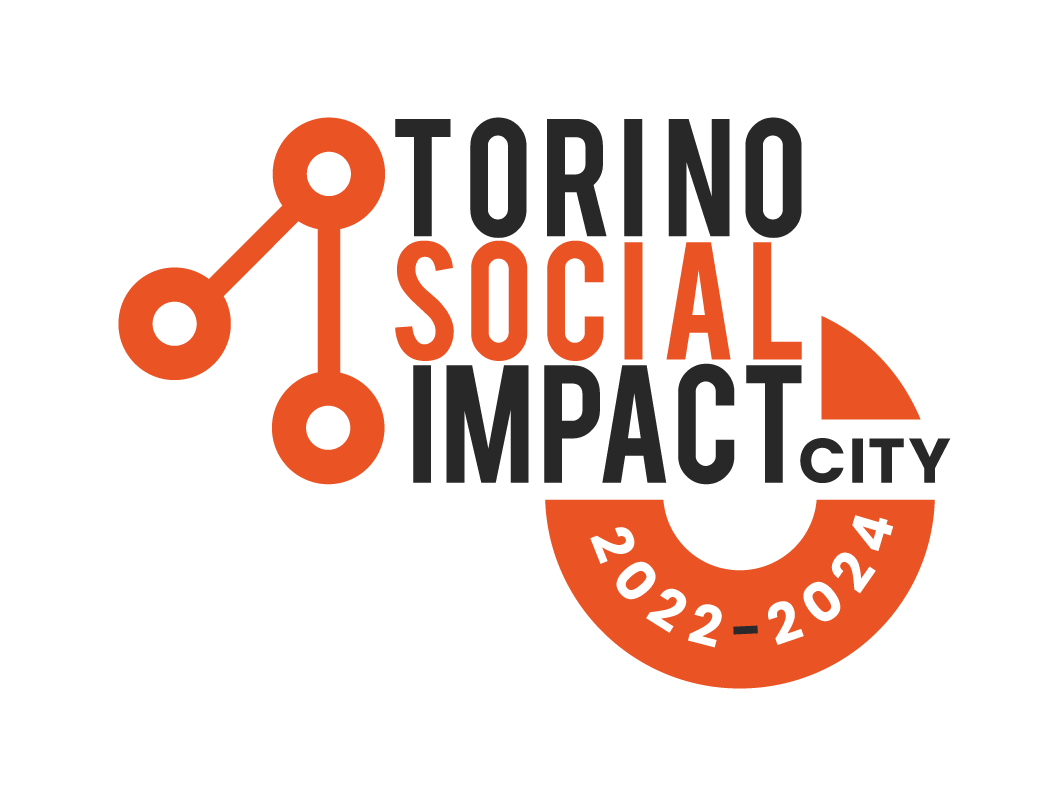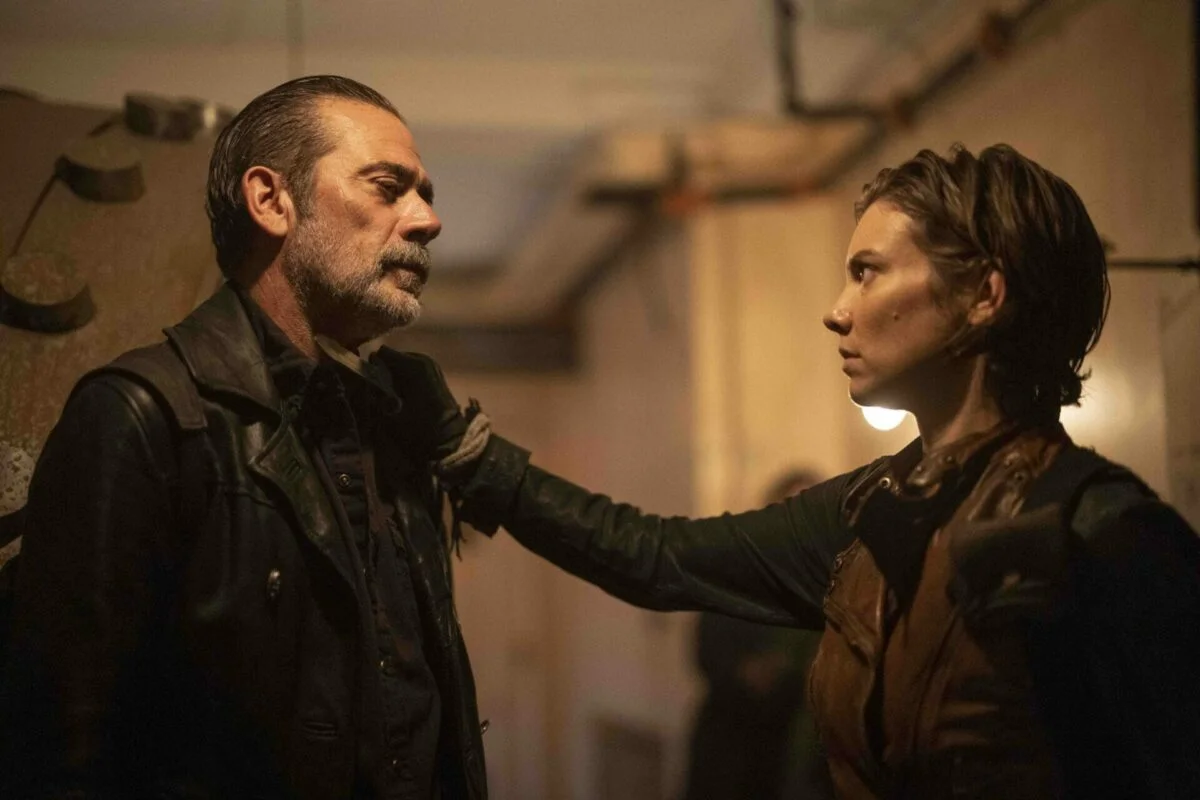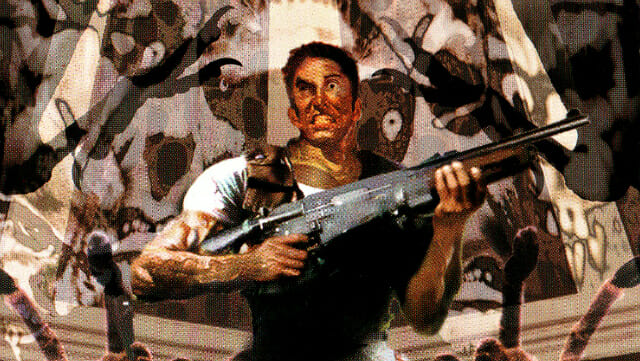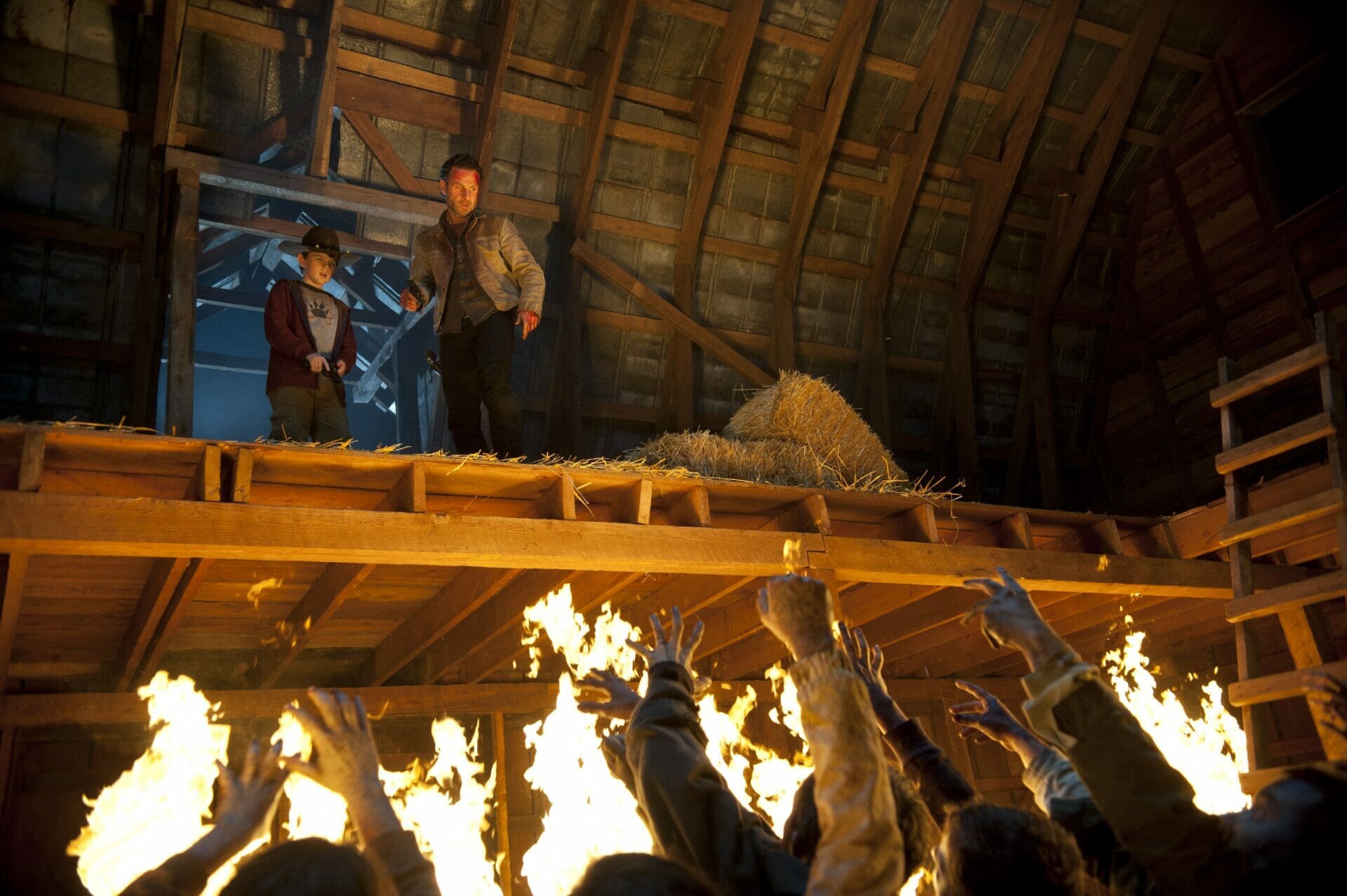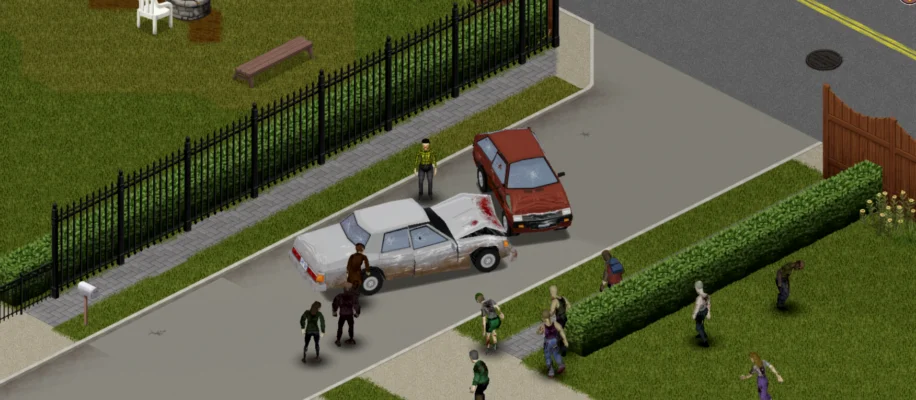
Project Zomboid by The Indie Stone Review | A isometric zombie survival game
Studio
Art Director
Lead Composer
Publishing Year
Type of game
Project Zomboid is an isometric zombie survival game developed by The Indie Stone, first released in 2013. Scavenge through rural Kentucky, avoiding hordes of zombies, to get what you need to survive the apocalypse. The game requires strategic thinking and planning ahead, as electricity and water services will eventually be shut down. The game features both single-player and multiplayer support and includes a series of challenging scenarios to choose from.
Project Zomboid was the developers’ dream game. After the success of Minecraft, they finally rallied their thoughts and got to work. In 2009, Chris Simpson, Andy Hodgetts, and Marina Siu-Chong formed The Indie Stone, later joined by Nick Cowen in 2011.
In an interview with Rock Paper Shotgun, the team explained that they drew inspiration from zombie movies rather than other zombie games. This unique perspective likely contributed to Project Zomboid’s distinctive approach to the genre:
We have a joke that we bought the design document for this game from Max Brooks. We read World War Z ages ago and pretty recently bought a copy of the Survival Guide, and it reads pretty much like a document of what should be in the game. The whole ‘zombie apocalypse scenario’ thing is something we’ve all discussed at some point. […] We always wished we could board up windows and push furniture against the doors.
– Chris Simpson, interviewed by Rock Paper Shotgun
The team had a clear vision for what the game should be: an intense zombie-outbreak simulator that gave players total freedom to act in ways they deemed most logical. We always watched a character die in a zombie movie and thought, “I would never do something so stupid”. Project Zomboid lets you carry out your perfect plan.
The rough beginnings of Project Zomboid
Project Zomboid has evolved significantly over the years. The earliest version of the game was actually in 2D-pixel art. The situation seemed grim after a catastrophic setback when a laptop containing months of work was stolen. However, the developers decided to get back on the horse and start from scratch, creating a fully 3D open-world environment.
While the new version wasn’t an immediate success, the team persevered, iterating on their game for over a decade in early access. Today, Project Zomboid is a complex, ever-evolving simulation praised for its depth and realism. It is supported by a dedicated fanbase and enriched by an active modding community. Project Zomboid is a testament to what happens when you don’t give up on your dreams.
Character customization: from Average Joe to Expert Survivor
At the beginning of your journey, the player can customize his or her character. There aren’t many aesthetic options, and the graphics of Project Zomboid aren’t its forte. The critical part here is the skill tree. Leveling up your skills in-game takes a lot of time and effort, so starting with strong base stats that fit your playstyle is crucial.
You can choose your profession before the outbreak and build your character’s strengths and weaknesses from there. For example, a police officer will start with decent aiming skills, while a thief knows how to hotwire cars, and so on. The game forces you to balance the pros and cons of your build. If you want many perks, like being strong or sneaky, you’ll have to choose some downsides to counteract them, such as being sleepy or a slow reader.
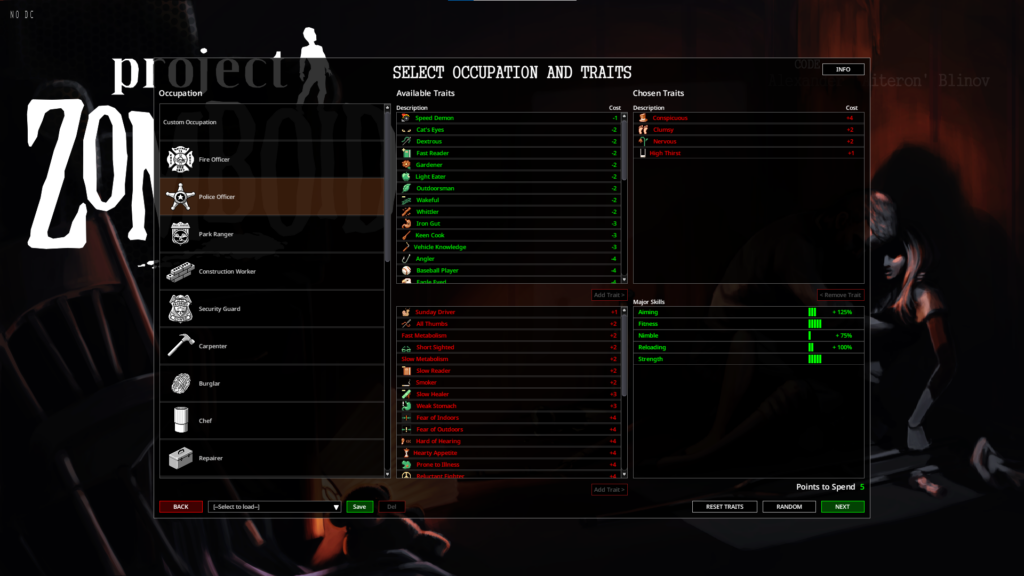
Game Mechanics: An Unforgiving Experience
This game is brutal for beginners. It requires a state of hyper-awareness and is not everybody’s cup of tea. The UI is overwhelming and tricky to get used to. Moving objects from one place to another is finicky and takes time, precisely like in real life. When your character dies, there is no way to go back. Any small mistake can erase hours of progress. Your character also has moodlets to keep an eye on; it feels like playing a Sims 1 zombie mod at times.
In Project Zomboid, every detail counts. If you have wet clothes for too long, you’ll get sick and start coughing or sneezing. The noise will attract zombies, and you will die. Break into a fancy house, and it might have alarms. Run out of breath while escaping? The zombies will catch up with you. You can die of food poisoning, too, so avoid expired food. Even standing too long near rotting zombie corpses carries the risk of infection.
If this is still too easy, wait a few weeks until the water shuts off. Not enough? Wait a little longer, and the power will go out, too, forcing you to continue in total darkness or search for a generator. Oh, but you have to learn how to use a generator – unless you were an engineer in your previous life, you’ll have to read a manual, and those aren’t easy to find.
All these details and mechanics are just touching the tip of the iceberg.
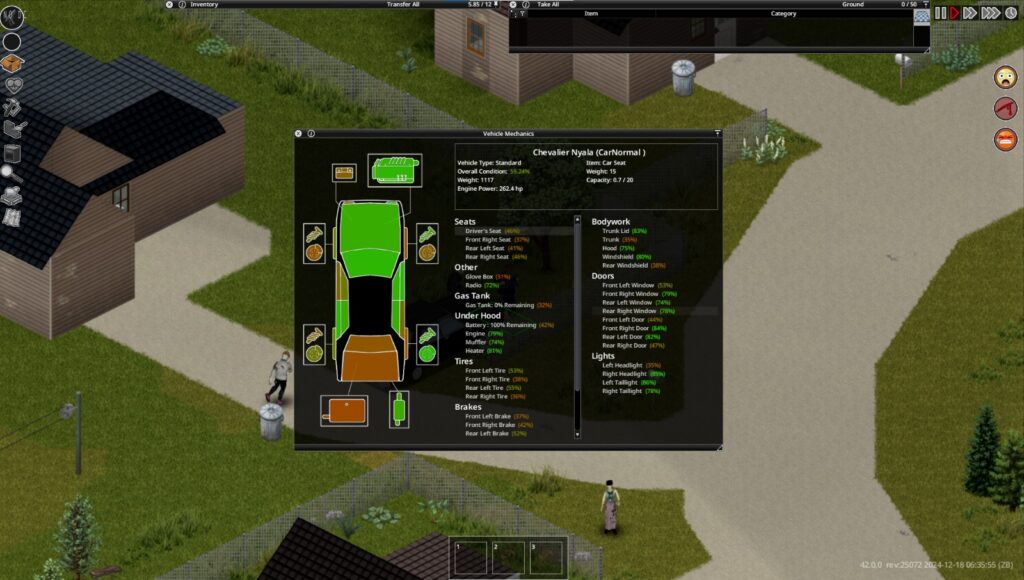
Diegetic Storytelling in Project Zomboid
These are the end times. There was no hope of survival. This is how you died.
This is the only thing the game tells you before loading you into the world. The game sets the tone right from the start: you aren’t a hero; you aren’t even alive. Dying is inevitable. You spawn in a random house, and that’s about it. The game doesn’t tell you what to do.
This lack of direction might be off-putting to some players, especially since we’re so used to always being nudged in the direction the game wants us to go. Project Zomboid subverts that completely, but that doesn’t mean there isn’t any storytelling going on. For a game with no plot, NPCs, dialogue, cutscenes, etc., the storytelling in Project Zomboid is surprisingly compelling. The key word here is immersion.
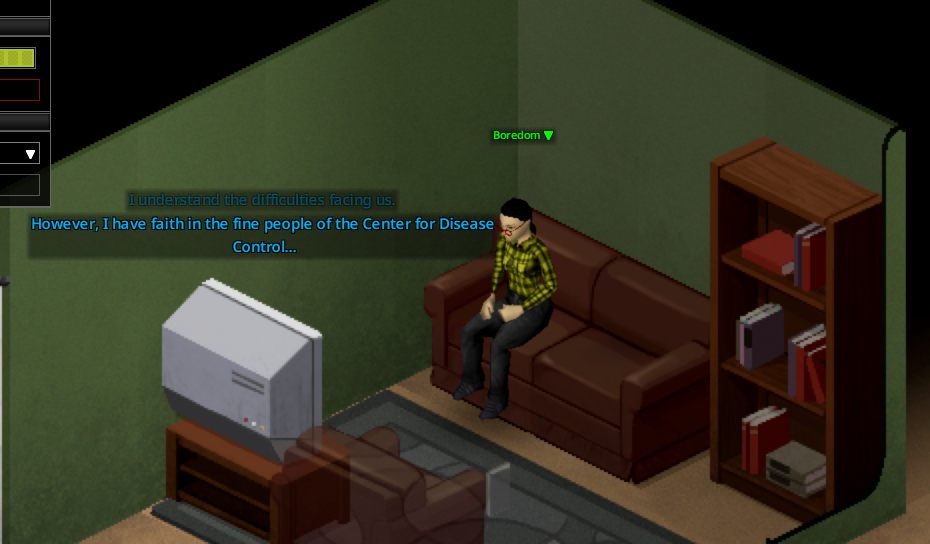
Story elements are scattered throughout the game organically. During the first few days, you can catch local news broadcasts, known as the Knox Event, for details about the outbreak. Later on, if you manage to reach Louisville, you’ll find devastated shops and abandoned cars blocking the main roads – all signs of the mayhem that occurred in the early hours of the apocalypse.
The bleak colors and sound design further emphasize Project Zomboid‘s tone, creating an eerie atmosphere. The OST is both epic and hopeless. The music composer, Zach Beever, was just sixteen years old at the time of the game’s first release.
Build 42: What’s next?
The long-awaited update, commonly called Build 42, was released on December 18, 2024, adding a ton of new content that the developers have been working on for the past two years. It introduces new locations, game mechanics, animals, and NPCs. The available version is unstable and single-player only, as it is meant to be tested directly by the players.
Everyone is encouraged to try it out and provide feedback. The Indie Stone consistently listens to what the fanbase wants and strives to create an experience that genuinely scratches the “doom-planner” itch. This is the perfect time for new players to take on the challenge or for returning players to refresh their experience.
Tag
Buy a ☕ for Hypercritic
